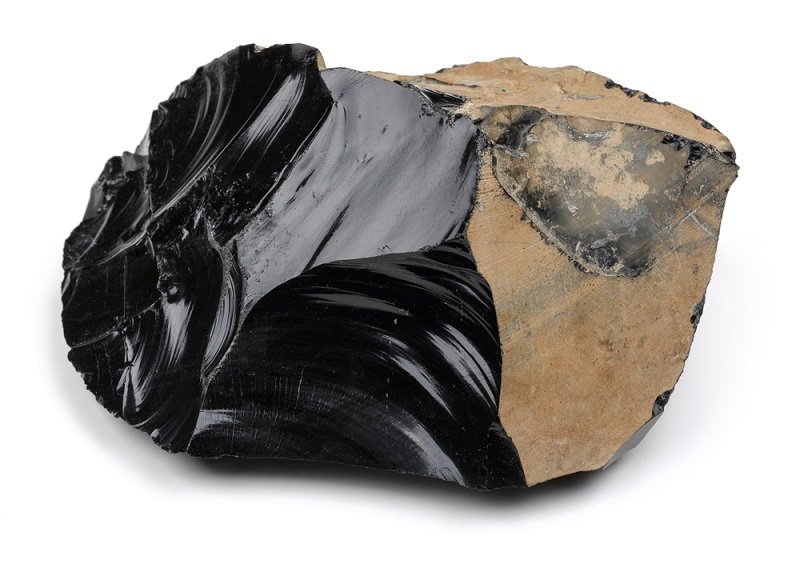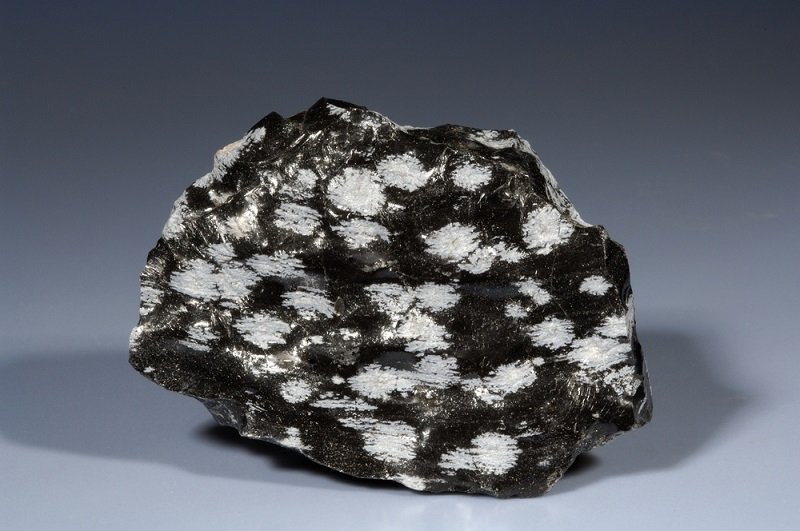Obsidian is famous for its use in historical artifacts, especially those used for cutting. To this day it is a prized material by many flintknappers, although not everyone agrees that it’s the best material for flintknapping. There are quite a few reasons why, but it all starts with the way this mineraloid is formed in the first place.
So, let’s take a closer look at obsidian and why it’s so good for flintknapping, and then we’ll look at some substitutes that come quite close to the “real thing.”
Related: Flint Knapping for Beginners (From Raw Material To Finished Point)
It’s All in the Structure, or the Lack Thereof
Most of the knappable stone types are some variety of chert. Chert is a micro-to-cryptocrystalline form of silica, meaning that it still has an internally arranged structure. Specifically, most cherts are comprised of quartz and some amount of moganite, which is another form of crystalline silica.
Obsidian is also comprised of silica. However, the silica-rich magma which forms it cools extremely quickly, preventing it from having time to crystallize at all. This means obsidian doesn’t even technically qualify as a mineral, since that definition requires an “orderly internal structure” and is instead considered an amorphous mineraloid.

The dark color comes from iron included in the material. Some forms of obsidian will also have other small amounts of impurities distributed through the material. The “mahogany” coloration in mahogany obsidian comes from hematite impurities. Most obsidian varieties are actually colored by some form of iron mineral, but the “generic” obsidian still obtains its black coloration from oxidized iron in the first place.
Essentially, obsidian is a glass material. The lack of internal structure means that flaking methods go through a very clean transfer in the material, without being interrupted by microscopic crystalline structures.
This leads to incredibly sharp edges on the tool and easily repeatable flake patterns in the material. Obsidian edges can often be only a few molecules thick, making them sharper than even the best steel blades along those portions.
While obsidian is highly regarded as a knapping material, the lack of structure does lead to a couple of downsides.
Obsidian is softer than chert materials, so it doesn’t hold an edge for quite as long. It’s also easier to break, especially if you’re used to working with tougher material that’s less brittle. The mechanical properties also mean that you need to be careful about which type of obsidian you use and where it’s sourced.
In my opinion, obsidian makes for excellent points due to its sharpness, and it’s also a prime material for eccentrics (ie: anything not a knife or projectile point) due to the easy knappability of the material. For points over 3” or knife blades, however, other materials may be preferable as flint and chert varieties will generally do better with shearing forces applied.
Are All Types of Obsidian Good for Knapping?
Not necessarily. While the vast majority of obsidian is great for knapping, there are a few things to take into account when picking out a piece.
Sheen, mahogany, and rainbow obsidian are all fine to use and can make beautiful finished pieces during the knapping process provided you have a solid piece of material. Some types, however, such as snowflake obsidian aren’t really suitable for knapping.

This is due to the “snowflakes” which are actually cristobalite inclusions. This is a different form of silica which crystallizes at a relatively high temperature and the cristobalite will make normal knapping almost impossible as fractures won’t transfer cleanly through the material.
A lot of surface-found, as opposed to quarried, material can suffer from the effects of weathering. This can leave you with material that’s internally fractured due to the freeze/thaw cycles it’s been exposed to, or with pitting from normal erosion.
Both of these can be worked around, but you’ll need to sort them out before knapping begins in earnest and they’ll reduce the amount of usable material in the rock overall. At the very least they will limit the size of pieces that can be made from the stone.
The important thing is to find pieces of obsidian that are solid and lack any sort of inclusion that’s actually crystalline in nature. As long as you have that, it’s a wonderful material to work with.
Do I Need to Treat Obsidian for Knapping?
While it’s common to heat treat the various chert-type minerals that are often used for flintknapping, obsidian has no need for this. Indeed, heat treatment is generally used to make these materials more like obsidian by theoretically fusing impurities and silica microcrystals together.
Heat-treating obsidian is either going to do nothing, or simply shatter the material due to thermal shock. There’s never a need to treat it in this fashion.
What Materials Flake the Closest to Obsidian?
There are a lot of materials out there that come close to obsidian when it comes time to flake. Keep in mind that the lack of crystalline structure means that obsidian can flake differently from chert materials, usually in a more repeatable fashion, but it generally requires less force to produce flakes.
The high purity of silica in obsidian is actually surpassed by a few manmade materials.
Namely, glass is one of the easiest materials to use when it comes to creating knapped pieces. There’s never really a lack of colors or variety here either, since everything from fiber optic glass to slag glass to art glasses like millefiori are all equally usable.
Many people begin their journey with some form of glass, often derived from bottles or jars. The bottoms of beer or soda bottles are easy to remove and thick enough for making simple objects, for instance, although you’ll have to work out the flat plane in the center by carefully removing the lens shape. Straight bottle sides are easier to work with in many cases.
Obsidian isn’t expensive and it’s rather abundant, so it also makes a fine beginner material, it just may not be as expediently available as a trip to the local dumpster to grab a few beer bottles and knock out the bottoms.

